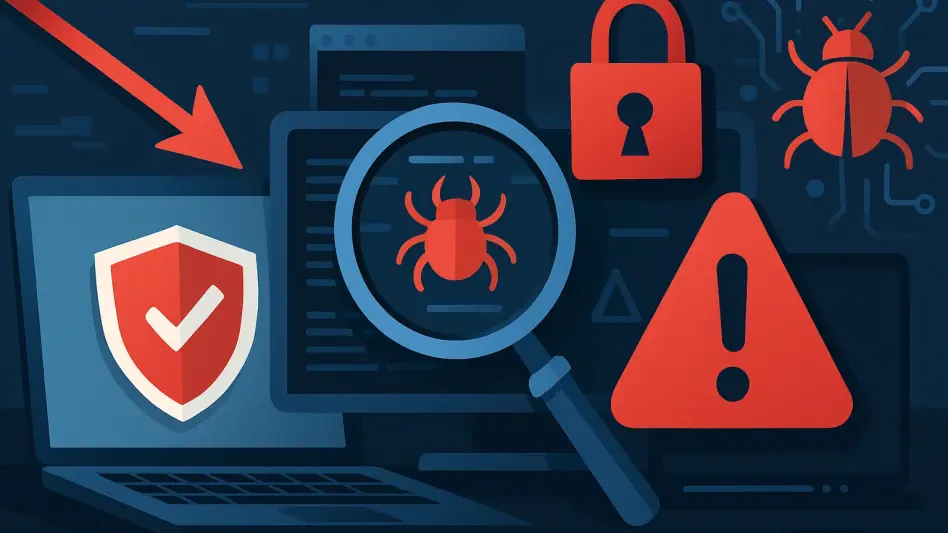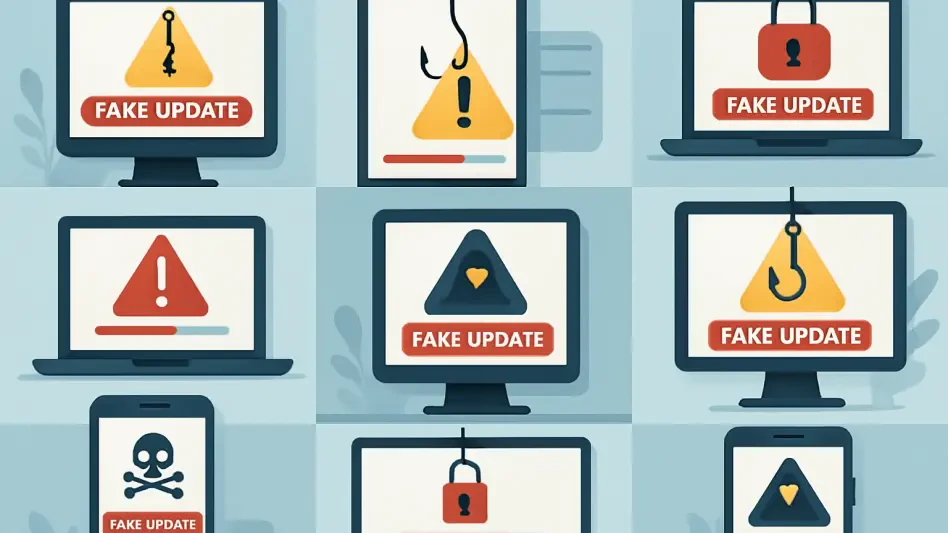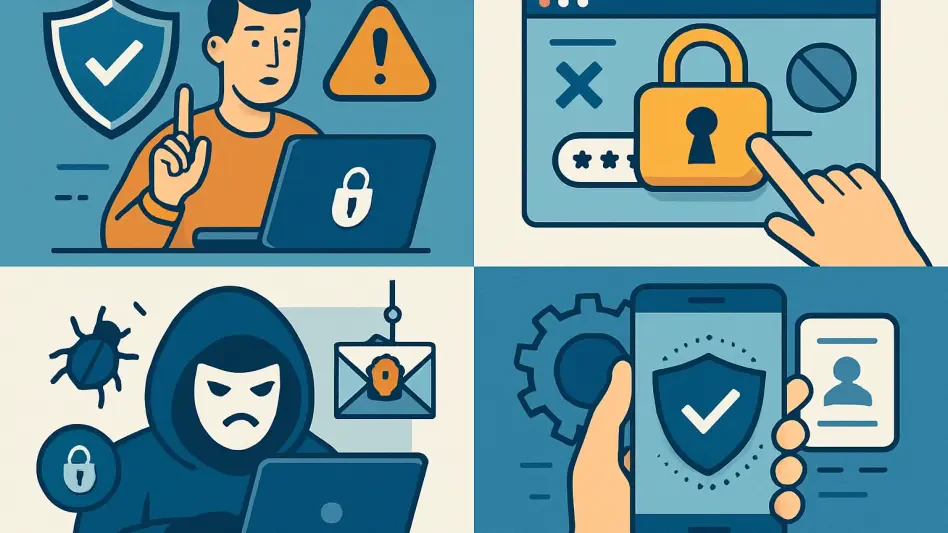In today’s digital landscape, securing access to corporate systems has become more crucial than ever, prompting enterprises to reassess their authentication strategies. Despite the push for advanced security measures, a staggering 65% of enterprises still rely solely on passwords. This reliance persists even as multifactor authentication (MFA) gains traction and new passwordless technologies emerge. The latest report by 451 Research, commissioned by Bitwarden, delves into the challenges and solutions associated with enterprise password management. The findings reveal a concerning trend—while some companies adopt improved security measures, many continue to depend on outdated and vulnerable password-based systems.
The State of Enterprise Password Management
Reliance on Passwords Amid Evolving Technology
Enterprises are navigating the complex terrain of cybersecurity, where passwords have long been the foundation of authentication. Even as technologies evolve, 65% of enterprises depend exclusively on passwords to secure access to their systems. This significant reliance underscores the persistent vulnerability associated with password-based security. The report indicates that 37% of applications still operate on password-based authentication, despite the advancement of passwordless options like FIDO2. The slow transition to passwordless methods, with only 21% adoption, signifies the challenges enterprises face in completely moving away from traditional credentials.
The report further highlights the regulatory requirements pushing for stronger Identity and Access Management (IAM) controls. Frameworks such as SOC 2, HIPAA, and PCI-DSS mandate robust IAM practices, yet many companies struggle to achieve the right balance between security, compliance, and usability. This struggle often leaves enterprises exposed to both insider threats and external cyberattacks. Password management remains a critical issue, exacerbated by the complexities of maintaining compliance while ensuring user ease. As businesses aim to meet these regulatory demands, the reliance on passwords continues to pose risks.
Integration of Multifactor Authentication
Despite the noticeable strides in MFA adoption, the report shows that enterprises have not fully embraced its potential. Strong MFA is identified as the leading defense against cyber threats like ransomware and malware, but many companies still primarily rely on passwords. 55% of enterprises recognize the importance of MFA, yet diverse authentication measures such as SMS-based two-factor authentication (42%), authenticator apps (32%), and biometrics (25%) reveal a fragmented approach. This inconsistency in adopting MFA solutions suggests that enterprises need a more cohesive strategy to enhance security.
The necessity of MFA is further underscored by recent breaches. A notable example is the 2024 cyberattack on UnitedHealth’s Change Healthcare, which resulted in a staggering $786 million in damages. This incident highlights the urgent need for robust MFA on critical systems, as relying solely on passwords proves insufficient. The report calls for a comprehensive integration of MFA alongside traditional authentication practices. Enterprises must prioritize multifactor authentication to mitigate risks and safeguard sensitive information, given the increasing sophistication of cyber threats targeting password-based systems.
Challenges in Identity and Access Management (IAM)
Complexities of IAM Strategies
Identity and Access Management (IAM) is a multifaceted area that presents numerous challenges for enterprises striving to secure their systems and data. According to the report, one of the most pressing issues is the fragmentation in IAM strategies. Many enterprises grapple with inconsistent policy enforcement, leading to vulnerabilities and inefficiencies. The high IT overhead associated with password reset requests further compounds the problem, as it drains resources and affects overall productivity. This fragmented approach indicates the need for streamlined and cohesive IAM policies.
The report identifies password management as the primary IAM challenge, with 35% of enterprises reporting it as a significant pain point. Other notable challenges include privileged access management, password reuse, compliance audits, and the termination of access for departing employees. As businesses grow and evolve, managing these aspects of IAM becomes increasingly complex. Enterprises must address these challenges head-on by adopting robust IAM policies that minimize the risks associated with password-based authentication. Simplifying IAM strategies and reducing the administrative burden on IT departments are crucial steps towards enhancing security and resilience.
Impact of Bring Your Own Device (BYOD) Policies
The trend towards Bring Your Own Device (BYOD) policies in the corporate environment introduces additional security risks. As more employees use personal devices to access work-related systems, the potential for security breaches rises. BYOD policies necessitate the adoption of zero-trust models to authenticate all users and devices before granting access. This approach ensures that every access attempt is verified, regardless of the device’s origin, enhancing overall security. The report underscores the importance of integrating zero-trust principles into daily operations to mitigate the risks associated with BYOD practices.
Simplifying and strengthening IAM practices are essential measures in addressing the security challenges posed by BYOD policies. Enterprises must implement comprehensive IAM strategies that encompass user behavior patterns and device authentication. By doing so, companies can better manage the complexities brought about by the proliferation of personal devices in the workplace. The integration of robust password management and multifactor authentication solutions can significantly enhance security and compliance, fostering a resilient business environment capable of withstanding evolving cyber threats.
Strategic Recommendations for Enhancing Security
Embedding Password Management and MFA
The report suggests that a back-to-basics approach is vital for enterprises to effectively manage their IAM challenges. By embedding password management and MFA into daily operations, businesses can create a more secure environment. Aligning IAM solutions with user behavior is key to achieving this goal. Instead of viewing password management as a standalone task, it should be integrated into the overall IAM strategy. This alignment helps in mitigating risks and bolstering resilience against cyber threats.
Bitwarden, as a leader in password, passkey, and secrets management, exemplifies the importance of robust IAM solutions. The company’s open-source security solutions support enterprises in enhancing their security and compliance efforts. By fostering secure information management and sharing practices, organizations can ensure long-term security success. The report emphasizes that adopting strong IAM practices is not a mere regulatory box-checking exercise but a fundamental aspect of sustaining business operations in a secure manner.
Zero-Trust Principles for Long-Term Security
In today’s digital age, securing access to corporate systems is more critical than ever, leading businesses to rethink their authentication methods. Despite the push for more advanced security protocols, a staggering 65% of enterprises still rely exclusively on passwords. This heavy dependence on passwords remains even as multifactor authentication (MFA) becomes more widespread and innovative passwordless technologies emerge.
The latest study from 451 Research, commissioned by Bitwarden, explores the obstacles and solutions linked to enterprise password management. The findings expose a troubling trend. While some companies are beginning to adopt stronger security measures like MFA and passwordless options, many still depend on old and vulnerable password-based systems. This resistance to transition indicates a significant gap in the adoption of modern security practices, despite the availability of better alternatives.
Enterprises must prioritize evolving their security strategies to protect sensitive information effectively and stay ahead of potential threats.







